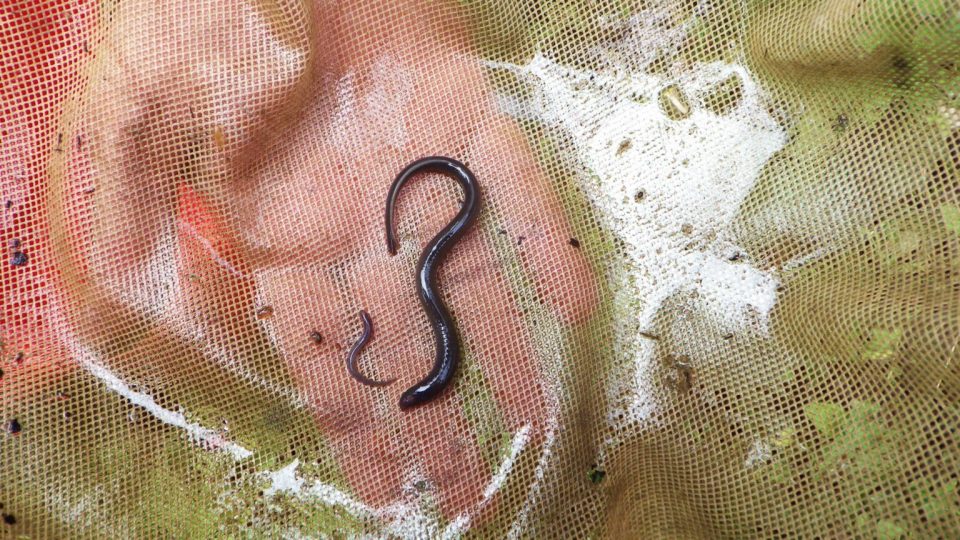
Researchers in northern Greece have discovered a rare and critically endangered ancient fish species that has survived for at least 360 million years, the Greek lamprey.
The Greek lamprey (Caspiomyzon hellenicus, or “Gavohelo” in Greek, which means “blind eel”), also commonly known as the Greek brook lamprey, has been found in the running waters of the Philippi Peatland (Tenagi of Philippi) near Kavala in East Macedonia. It is a blind fish that looks more like a worm and is only a few centimeters long. This fish lives closer to river beds. Researchers refer to it as a “treasure” for the biodiversity of the area.
A rare species, the Greek lamprey, finally spotted
A Fisheries Research Institute (FIR) team had been working in the area of Tenagi of Philippi, a natural landmark with historical significance of millions of years, since 2023 studying the marine fauna. They used eDNA (Environmental DNA) analysis and other more traditional research methods that led them to the discovery of the Greek lamprey’s existence.
“We encounter Caspiomyzon hellenicus in two other areas of Greece beyond Tenagi,” Dr. Argyris Sapounides told Greek National Press Agency. “It’s a very rare species and it’s difficult to find it since it lives inside the bottom of the rivers, yet its existence is an indicator of the good condition of the ecosystem in the area since it requires clean waters in order to survive.”

The fascinating life and death of the ancient Greek lamprey fish
The Greek lamprey belongs to an ancient species of vertebrates, generally referred to as lampreys. It is part of organisms that have not developed, yet have a remarkable way of survival. According to Sapounides, this endemic fish species has a life span that does not expand beyond five years.
He further added:
“It always stays in the bottom of the river and only its head sticks out. It eats passively since it’s standing against the current of the river. Imagine its mouth as a funnel, which withholds various micro-organisms that are being carried away by the current. Only towards the end of his life it acquires briefly some vision, it comes out of the bottom of the rives and moves towards some vegetation to lay its eggs and then die.”
Human as its main enemy
As with all critically endangered species, researchers warn that human activities are the biggest threat to the survival of the Greek lamprey, which during FRI’s research was mostly found in the Aggitis River. The pollution of rivers or even the shake up of the sediment during a clean up can be lethal for this fish species.
During their work in Tenagi of Philippi, researchers from the Fisheries Research Institute also studied a number of other fish species living in the area, including two endangered ones. All fish, after the study was completed, were returned to their natural habitat.
